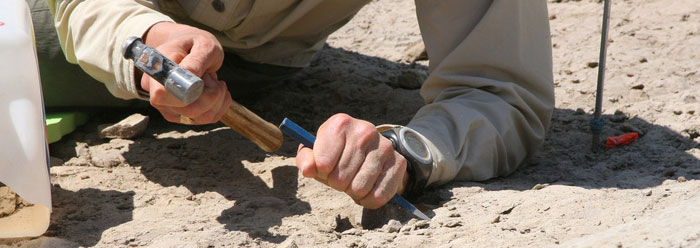Who has ever heard of a fossilized brain? Few would expect such a discovery, yet it looks like that's what researchers found inside a Stone Age skull from Norway. If so, it would confirm a published creation prediction and challenge many evolutionary timescales.
Ten archaeologists have been digging out fossilized human remains from a fjordside location called Brunstad, an area that encompasses two Stone Age human encampments.1 The scientists' findings include Norway's oldest unburned skeletal remains and a skull remnant with an unexpected attachment.
University of Oslo archaeologist and Stone Age expert Gaute Reitan told the Norwegian Broadcasting Corporation NRK, "Inside [the skull] is something rather grey and clay-like. You can just think for yourself what that may be."1
The team thinks they have uncovered brains inside the partially buried skull. If further research verifies this, how could brains last that long?
San Luis Obispo County residents made news in 2012 with the discovery that they'd been using a whale brain fossil as a doorstop. It was most likely mineralized. Minerals in the shape of the whale's brain would last much longer than the actual brain-tissue remains.2 Perhaps the Norway brains were mineralized as well.
In 2010, paleoanthropologists working in southern Africa exposed what they described as "hints of a potential brain remnant" in an extinct ape fossil.3 Their careful use of language may have come from doubts about brains being able to last for 1.9 million years, the ape's age assignment.
The Norwegians estimate their brain remains at 8,000 years old.
In a biblical framework, the remains from both the African and Norwegian fossil sites were buried after the Flood, and would thus be fewer than 4,500 years old. Since brains disintegrate with time like all soft tissue, older age assignments for fossil brains seem less credible.
The biblical idea of post-Flood mega-storms supplies a framework for rapid and catastrophic inundations—those unique conditions required to mineralize soft organs before the tissues disintegrate. Plus, the idea of a recent creation supplies a timeframe for ancient soft tissues to fit within their expected shelf-lives.4
In 2009, Creation Science Update reported the discovery of a fossil-fish brain. But, like the whale brain fossil, it was probably mineralized. However, that article predicted continued discovery of genuine soft-tissue fossils, saying, "It can be expected that more soft tissue fossils, including brains and perhaps visceral organs, will be found."5
One year later, scientists described a mosasaur fossil from Kansas, saying, "A previous chemical analysis of the aforementioned pigmentations, using mass spectrometry and X-ray diffraction techniques, detected sufficient amounts of iron and porphyrin-derived compounds suggestive of the presence of hemoglobin decomposition products, and thus indicative that the traces may represent residues of visceral organs derived from the decaying animal."6 In other words, they detected decayed leftovers of its internal organs that had not been mineralized.
That same year, 2010, also saw the ape brain report. Can Norwegian fossil brains now join the list of fossils that fulfil this creation prediction of discovering fossil brains?
References
- Berglund, N. Stone Age brain stuns experts. News in English.no. Posted on newsinenglish.no July 10, 2014, accessed July 15, 2014.
- Thomas, B. Fossil Whale Brain Proves Paleontologist Wrong. Creation Science Update. Posted on icr.org January 27, 2012, accessed July 16, 2014.
- Thomas, B. A New Evolutionary Link? Australopithecus sediba Has All the Wrong Signs. Creation Science Update. Posted on icr.org April 15, 2010, accessed July 16, 2014.
- Vardiman, L. 2012. Tracking Those Incredible Hypercanes. Acts & Facts. 41 (5): 12-14.
- Thomas, B. What Does It Take to Fossilize a Brain? Creation Science Update. Posted on icr.org March 11, 2009, accessed July 16, 2014.
- Lindgren, J. et al. 2010. Convergent Evolution in Aquatic Tetrapods: Insights from an Exceptional Fossil Mosasaur. PloS ONE. 5 (8): e11998.
* Mr. Thomas is Science Writer at the Institute for Creation Research.
Article posted on July 25, 2014.

























